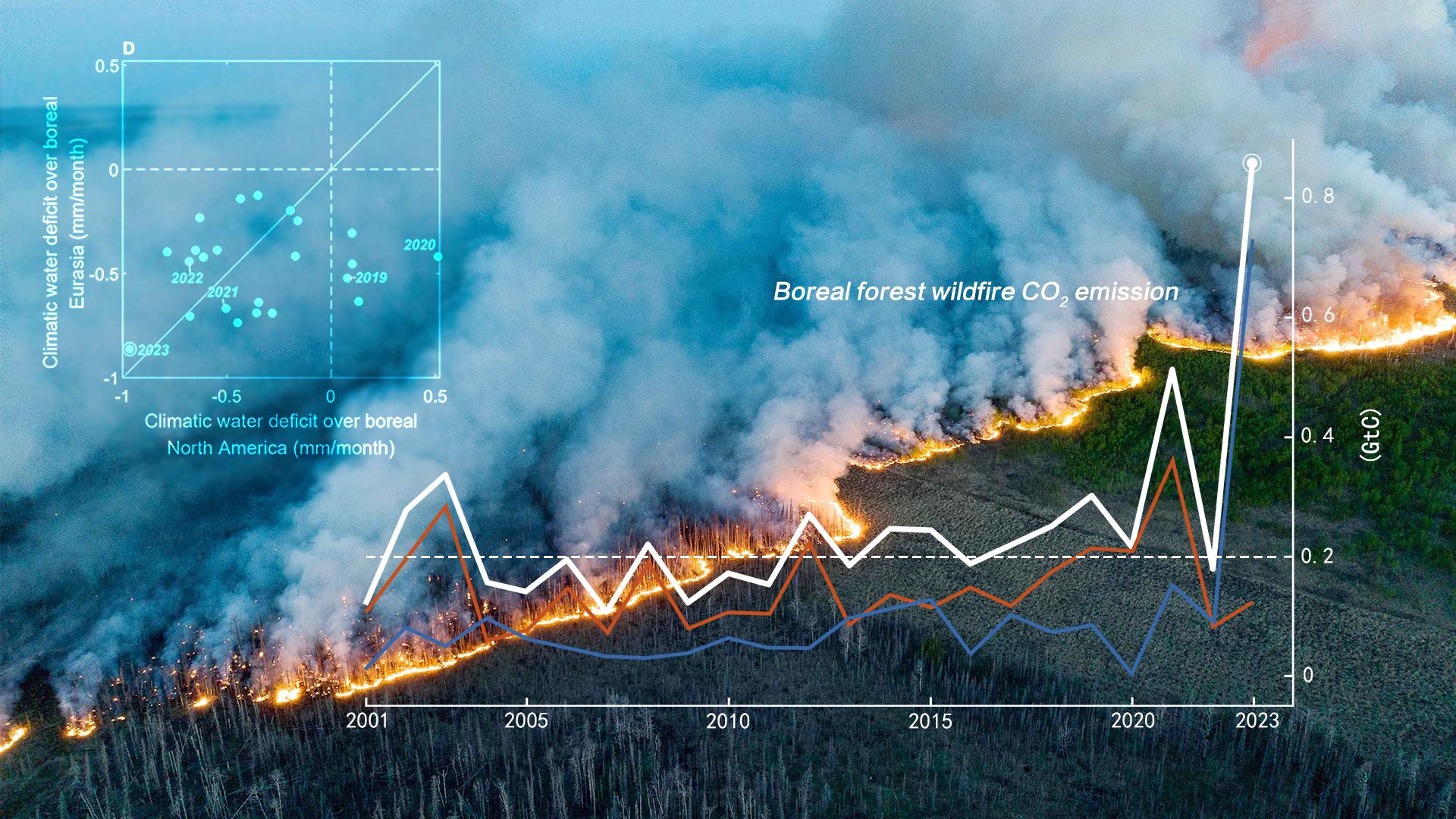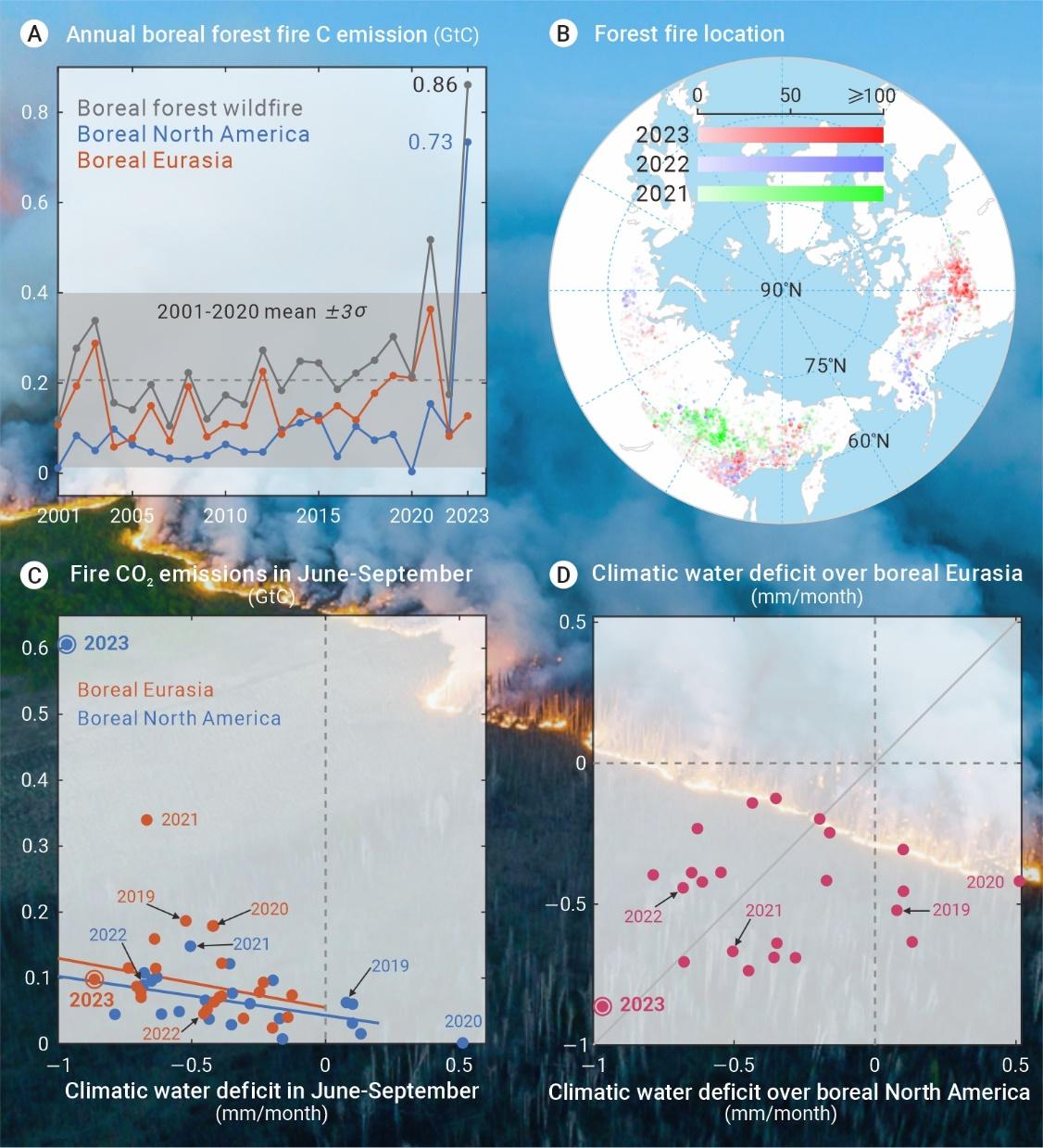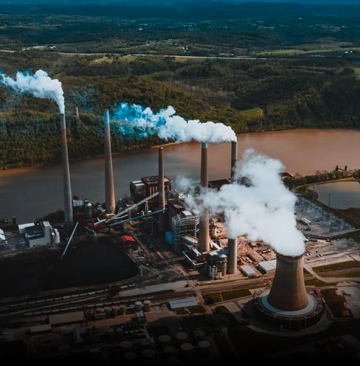Researchers reveal climate extremes cause record-breaking wildfire emission in boreal forest in 2023
In the context of global warming, frequent extreme weather events like droughts, high temperatures, and wildfires threaten the vital carbon-storing role of northern coniferous forests.
Understanding the mechanisms driving these extreme wildfire events and their impacts on the carbon cycle is imperative. By unraveling the complexities of these interactions, scientists can develop more effective strategies for mitigating the risks posed by climate change and preserving the resilience of our ecosystems.

Associate Professor Zhenzhong Zeng’s research group from the School of Environmental Science and Engineering (ESE) at the Southern University of Science and Technology (SUSTech) has explored the impact of climate-driven record wildfires in 2023, following the previous year’s surge, shedding light on their profound effects on the global carbon cycle.
Their work, entitled “Extreme climate sparks record boreal wildfires and carbon surge in 2023”, has been published in The Innovation, an interdisciplinary journal that promotes cutting-edge research and high-quality reviews across all scientific disciplines, such as physics, chemistry, materials, nanotechnology, biology, translational medicine, geoscience, and engineering.
In 2021, boreal wildfires released a record-breaking 1.76 Pg CO2, as reported by Zheng et al. (see related link below). Just one year later, this record was shattered, with carbon emissions soaring to an unprecedented 3.15 Pg CO2 in 2023, according to the Global Fire Emissions Database (GFED v4.1s).
Notably, emissions from boreal wildfires in 2023 exceeded three standard deviations above the 2000-2020 average, with a ten-fold increase in North American forests compared to the 2000-2020 average, while carbon emissions from boreal wildfires in 2021 came primarily from the northern part of the Eurasian continent.
The heightened climate water deficit experienced in the global north in 2023, particularly in North America, marked by its worst drought since 2001 from June to September, served as a significant trigger for large-scale extreme wildfires. This underscores the profound impact of climatic factors on wildfire intensity, implying a non-linear correlation between arid conditions and wildfire prevalence across boreal North America and boreal Eurasia.
Forest wildfires, typically seen as self-regulating and carbon-neutral processes, appear increasingly ensnared in a destructive cycle amidst current climate conditions. Climate change-induced factors like decreased precipitation and rising temperatures fuel wildfires, while the aftermath of fires releases large quantities of greenhouse gases, such as black carbon and carbon dioxide, intensifying global warming. In addition, post-fire vegetation recovery and alterations in surface albedo disrupt energy exchange between land and the atmosphere, impacting the carbon cycle.
Therefore, the unprecedented carbon emissions from the 2023 wildfire in the boreal forest underscores the vulnerability of ecosystems and the instability of the carbon cycle in the face of global climate change. A deeper investigation into these fires is warranted to unveil the intricate interactions between wildfires and the climate system, as well as their impacts on the global carbon cycle, thereby improving the accuracy of projections of future climate risks.

Figure 1. Carbon emissions, distribution, and corresponding climate conditions of fires in boreal forests during 2001-2023 (Background photo: BC Wildfire Service)
Lili Liang, a master’s student from the School of ESE at SUSTech, is the first author of the paper. The co-author includes Shijing Liang. Associate Professor Zhenzhong Zeng is the corresponding author, and SUSTech is the first affiliated unit.
This study was supported by the National Natural Science Foundation of China (NSFC) and the Start-Up Fund of SUSTech.
Paper link: https://doi.org/10.1016/j.xinn.2024.100631
Related link: https://www.science.org/doi/10.1126/science.ade0805
To read all stories about SUSTech science, subscribe to the monthly SUSTech Newsletter.
